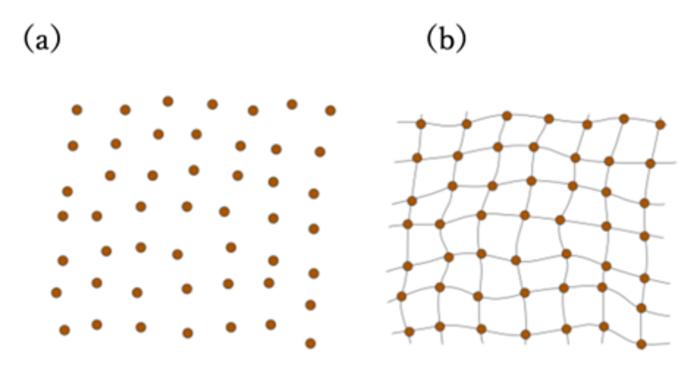
For centuries, glass has been an integral component of humanity’s artistic expression, tools, and technological advancements, reflecting a delicate balance of utility and beauty. This ubiquitous material, however, possesses complex microscopic properties that elude understanding and challenge conventional physical descriptions. A recent study spearheaded by Koun Shirai from The University of Osaka may pave the way towards a new understanding of these peculiarities associated with glass.
Shirai’s groundbreaking research, published in the journal Foundations, presents a compelling framework that connects traditional physical theory with the exploration of nonequilibrium materials. In his article, he offers a comprehensive thermodynamic description of glasses, revealing insights that may significantly alter the existing paradigm surrounding this amorphous solid. The inquiry into glasses is not merely an academic endeavor; it carries profound implications for the materials science field and could influence the development of myriad technologies.
Unlike most materials that attain a state of equilibrium, glasses are characteristically amorphous solids. Their atomic structure is in constant flux, gradually shifting in search of equilibrium, yet never arriving at that state. Shirai’s investigation underscores this paradigm: as atoms within glass remain perpetually disordered, the frustration of defining conventional thermodynamic parameters grows. This characteristic poses a significant hurdle for physicists who aim to apply standard thermodynamic laws to these complex materials.
Skeptics may question the appropriateness of applying the language and tools of thermodynamics to materials that elude equilibrium states. However, Shirai offers a novel perspective on equilibrium itself, suggesting that a system can be considered in equilibrium if energy extraction does not affect its surroundings. This redefinition serves as a pivotal insight, allowing scientists to apply thermodynamic principles to glasses—albeit with essential modifications. Shirai’s thesis propels our understanding of how such materials navigate the intricate balance of energy states.
In his examination, Shirai explains that order parameters—variables typically used in traditional thermodynamics to describe a material’s phase and state—can indeed be modified to suit glasses. By characterizing these order parameters as the time-averaged positions of atoms within the glass, his findings allow for the establishment of a unified thermodynamic model that aligns glasses with crystalline solids. This shift in perspective does not merely represent a theoretical restructuring; it has far-reaching implications for the study of complex materials that exist in similar out-of-equilibrium states.
The research conducted by Shirai is poised to extend beyond glass and has parallel applications in understanding biological systems and other nonperiodic materials. The implications of his work suggest that by revising how we perceive the thermodynamics surrounding glasses and other disordered systems, we may unlock deeper insights into a range of complex materials whose behaviors have previously resisted explanation. This advancement could contribute substantially to scientific and technological innovation.
In addressing the nuances of glass structure, Shirai emphasizes the fundamental differences between glasses and crystalline materials. While crystalline solids feature neatly organized atomic lattices, glasses exhibit a chaotic atomic arrangement akin to liquids. This distinction between order and disorder forms a critical pillar in Shirai’s arguments, as it is central to comprehending the thermal and energetic landscape of glass. However, the question remains—how can we simultaneously appreciate the disorder inherent in glasses while applying structured thermodynamic principles?
As we delve deeper into the knowledge presented by Shirai, it becomes evident that understanding these materials in a new light might redefine the foundations upon which our comprehension of materials science stands. The endless versatility of glass, from its usage in windows to its applications in cutting-edge technology, may soon be matched by a more profound understanding of its thermodynamic behavior motivated by Shirai’s research.
Not only does Shirai’s research redefine the thermodynamic analysis of glasses, but it also anticipates an era where glass can be manipulated at the atomic level, potentially yielding newer generations of materials. This could lead to revolutionary applications extending into fields as diverse as medicine and nanotechnology. The prospects are enticing, leading one to wonder how enhanced knowledge of glass properties could inspire functions, efficiencies, and technologies unfathomable today.
Furthermore, the impact of this research extends to academia, where it echoes through lectures, symposiums, and the minds of budding scientists. Shirai’s findings may encourage a new generation of interdisciplinary thinkers who bridge the gap between physics and materials science. Reflecting on this body of work, educators can fuel curiosity and inspire students to explore the untapped potential of complex materials.
As this article unfolds, it becomes crucial to note the broader implications surrounding Shirai’s research. The urgency to apply these insights to real-world problems is paramount. Whether addressing sustainability through innovative materials or enhancing communication technology, the findings may usher in a new era of materials science.
In conclusion, Koun Shirai’s research illuminates an oft-overlooked aspect of material science, shedding light on the perplexing nature of glasses and their thermodynamics. By redefining crucial concepts and linking them with practical applications, Shirai opens new avenues for innovation and scientific exploration that highlight the dynamic interplay between theory and application. His work stands to impact various sectors and energize further research aimed at understanding complex materials.
Subject of Research: Thermodynamics of Glass
Article Title: Nature of the Order Parameters of Glass
News Publication Date: 6-Mar-2025
Web References: Journal Article DOI
References: Shirai, K. Nature of the Order Parameters of Glass. Foundations. 2025.
Image Credits: Credit: Shirai, K. Nature of the Order Parameters of Glass. Foundations. 2025.
Keywords
Glass
Thermodynamics
Amorphous Solids
Order Parameters
Non-equilibrium Materials
Materials Science
Atomic Structure
Physics
Crystals
Biological Systems
Complex Materials
Energy States
Tags: amorphous solids in physicsartistic expression with glassatomic structure of glasschallenges in glass physicsglass propertiesimplications for materials technologyKoun Shirai researchmicroscopic properties of glassnonequilibrium materials sciencetechnological advancements in glass materialsthermodynamic description of glassestraditional vs modern physics of glass





